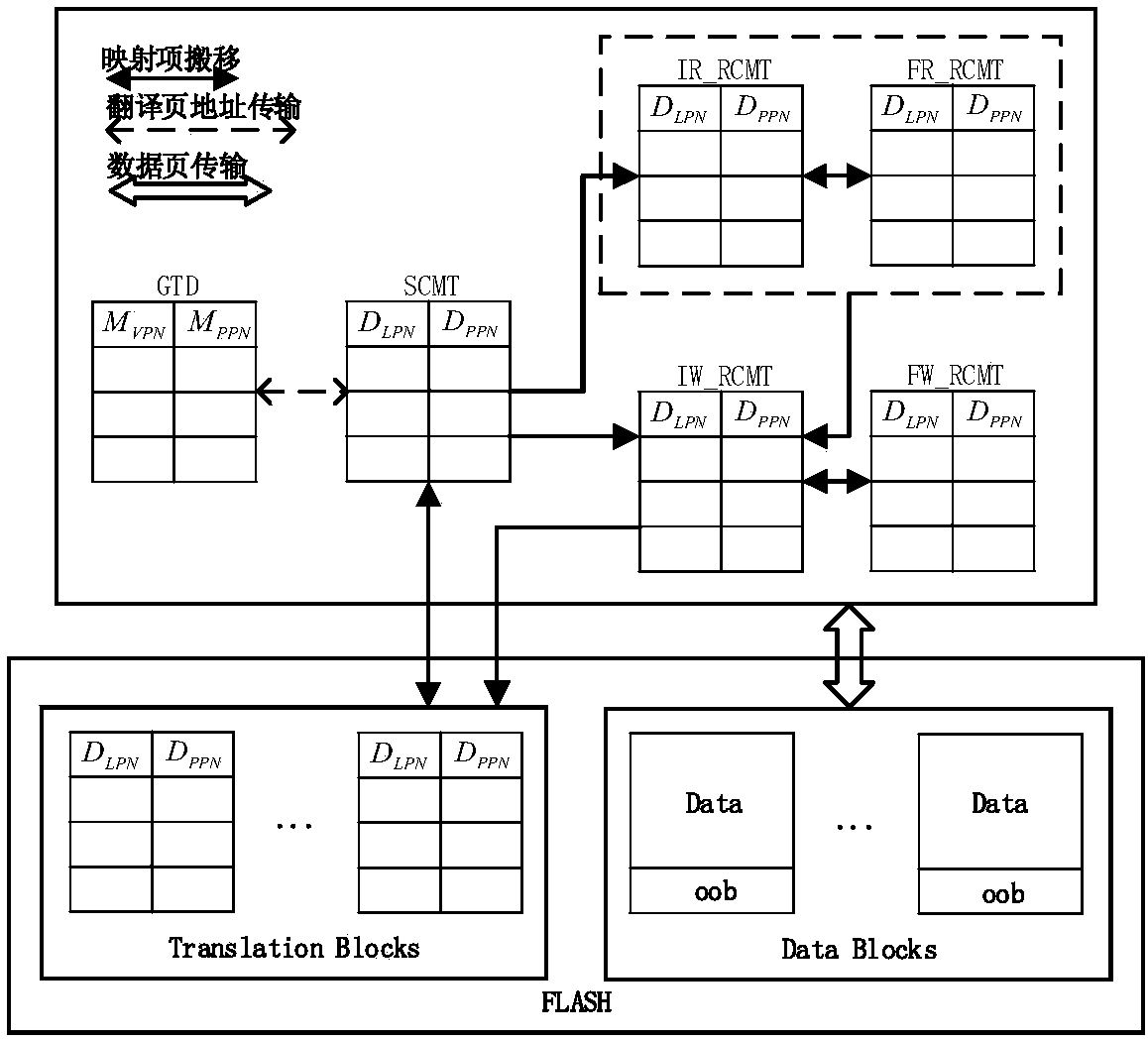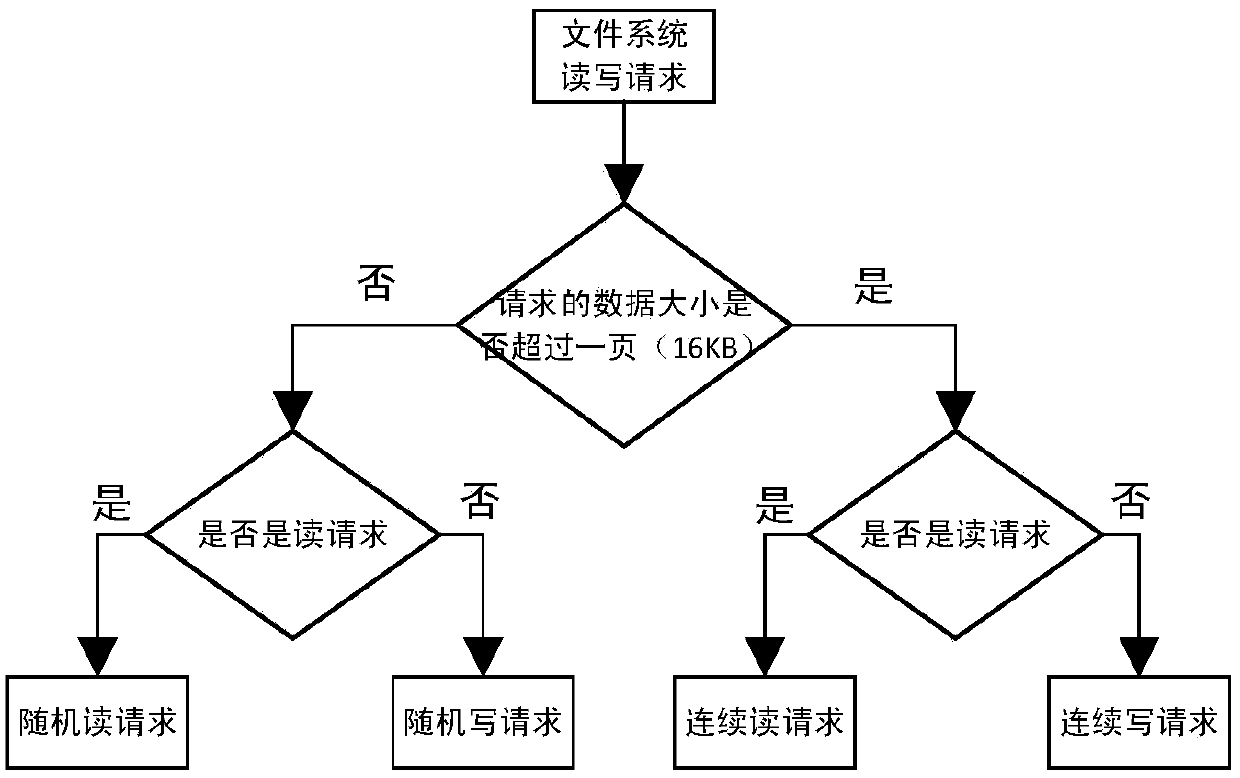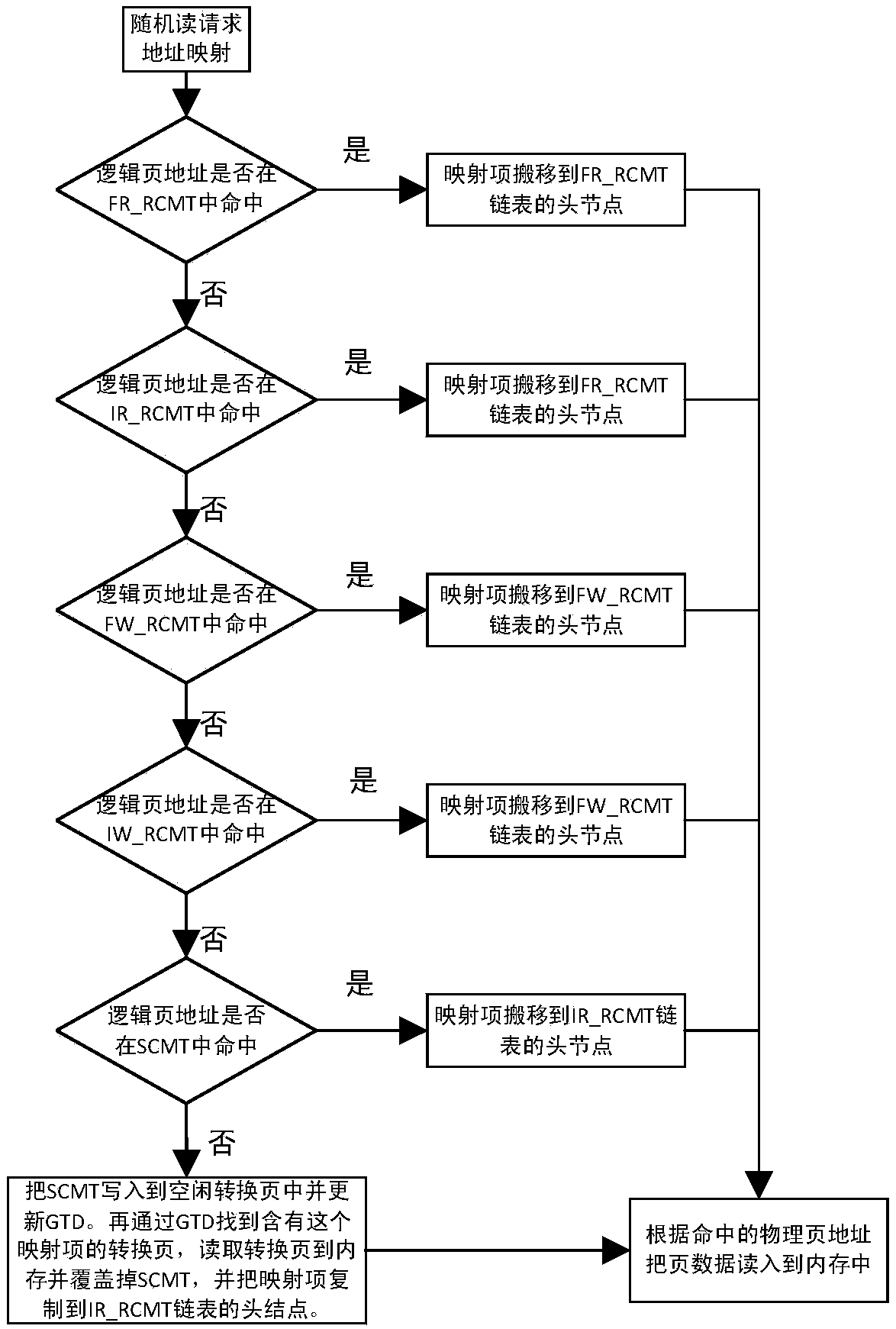Flash conversion layer control method based on request classification
A flash memory conversion layer and control method technology, applied in the storage field, can solve the problems of limited erasing times of flash memory, lower cache hit rate, and become bad blocks, so as to speed up the removal speed and avoid updating
- Summary
- Abstract
- Description
- Claims
- Application Information
AI Technical Summary
Problems solved by technology
Method used
Image
Examples
Embodiment Construction
[0053] A method for controlling the flash translation layer based on request classification provided by the present invention will be further described below in conjunction with the accompanying drawings.
[0054] see figure 1 , shows a schematic diagram of the address mapping principle of the flash memory conversion layer in the present invention, and the flash memory is divided into two parts: a data block area and a conversion block area. A variety of tables for address translation are stored in the memory SRAM, and these tables are classified according to the operation requests of the file system and the frequency of address requests, that is, the single cache translation table (CMT) of DFTL in the prior art is at least divided into The following types: Infrequent Read Random CachedMapping Table (IR_RCMT), Frequent Read Random CachedMapping Table (FR_RCMT), Infrequent Write Random CachedMapping Table (Infrequent Write Random CachedMapping Table, IW_RCMT), Frequent Write R...
PUM
 Login to View More
Login to View More Abstract
Description
Claims
Application Information
 Login to View More
Login to View More - R&D
- Intellectual Property
- Life Sciences
- Materials
- Tech Scout
- Unparalleled Data Quality
- Higher Quality Content
- 60% Fewer Hallucinations
Browse by: Latest US Patents, China's latest patents, Technical Efficacy Thesaurus, Application Domain, Technology Topic, Popular Technical Reports.
© 2025 PatSnap. All rights reserved.Legal|Privacy policy|Modern Slavery Act Transparency Statement|Sitemap|About US| Contact US: help@patsnap.com



